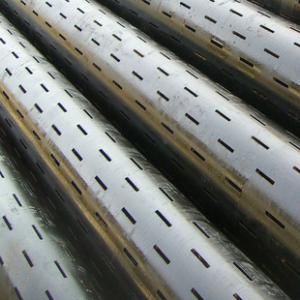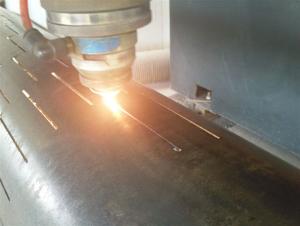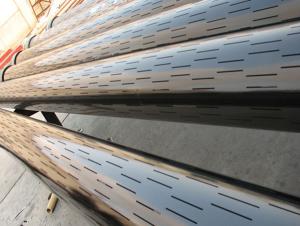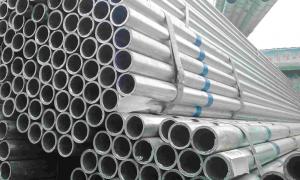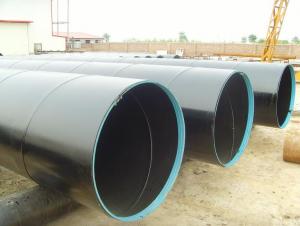J55|N80 Slotted Liner
- Loading Port:
- Tianjin
- Payment Terms:
- TT OR LC
- Min Order Qty:
- -
- Supply Capability:
- 20000 m.t./month
OKorder Service Pledge
OKorder Financial Service
You Might Also Like
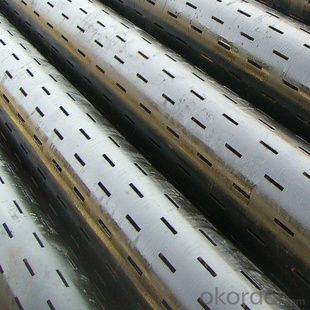
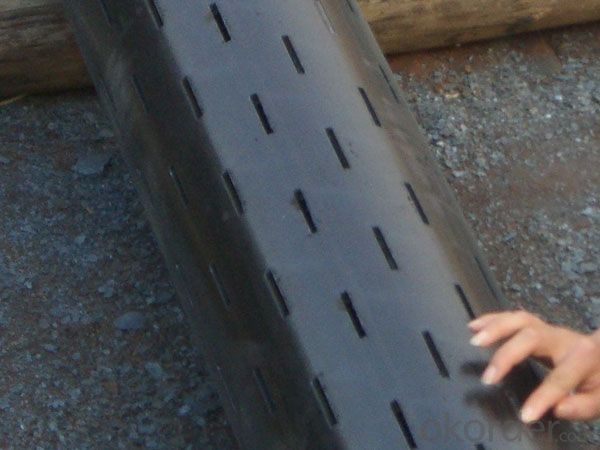
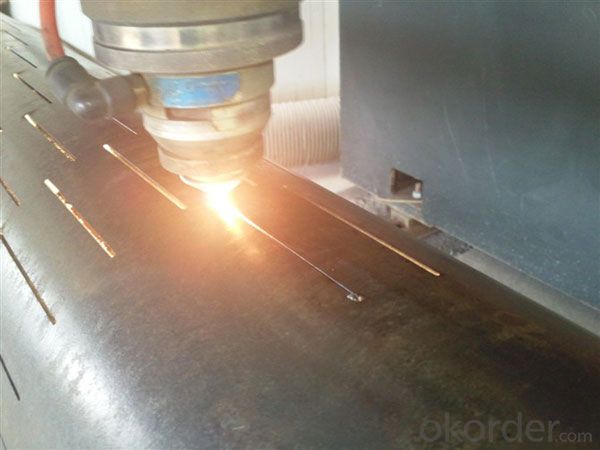
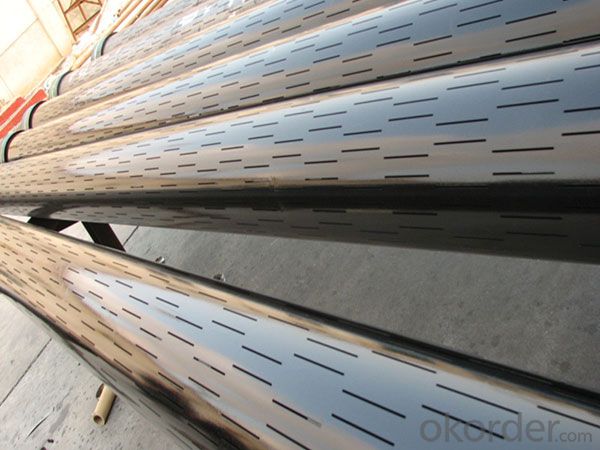
Product Descriptions :J55|N80 Slotted Liner
Slotted liners are used in gravel packed completions to prevent the production of gravel pack sand or can be used in stand-alone service when the formation grain size is large. Slot widths are often referred to in terms of "gage" or "gauge". Slot or screen gage is simply the width of the opening in inches multiplied by a 1,000. For instance, a 12 gage screen has openings of 0.012 inches. Slotted liners are manufactured by machining slot openings through oil-field tubulars with small rotary saws. Slotted liners are fabricated in a variety of patterns as illustrated in Figure.
The minimum slot widths that can be achieved is about 0.012 inches; however, slots widths cut below 0.030 inches in thickness involve higher costs because of excessive machine down time to replace broken saw blades that become overheated, warped and break. While the slotted liners are usually less costly than wire-wrapped screens, they have a smaller inflow area and experience higher pressure drops during production.
Slotted liners also plug more readily than screens and are used where well productivity is low and economics cannot support the use of screens. The single slot staggered pattern is generally preferred because a greater portion of the original strength of the pipe is preserved. The staggered pattern also gives a more uniform distribution of slots over the surface area of the pipe. The single slot staggered pattern is slotted with an even number of rows around the pipe with a typical 6 inch longitudinal spacing of slot rows.

SLOTTED LINER GEOMETRIES
The slots can be straight or keystone shaped as illustrated in Figure. The keystone slot is narrower on the outside surface of the pipe than on the inside. Slots formed in this way have an inverted "V" cross-sectional area and are less prone to plugging since any particle passing through the slot at the OD of the pipe will continue to flow through rather than lodging within the slot.
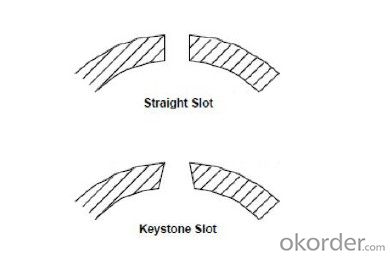
STRAIGHT AND KEYSTONE SHAPED SLOTS
The length of the individual slots is gauged on the ID of the pipe. Usual practice dictates 1½ inch long slots for slot widths 0.030" and under, 2 inch long slots for slot widths between 0.030 to 0.060 inches and 2½ inch long slots for slot widths 0.060 inches and larger (see Figure 6.4). Slot width tolerance is generally 0.003 inches for widths 0.040 inches and wider and 0.002 inches for widths less than 0.040 inches.
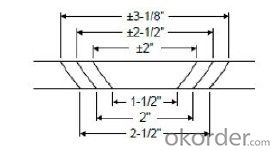
STANDARD SLOT LENGTHS
Slotted liners are generally designed to have a 3 percent open area relative to the OD surface area of the pipe although open areas up to 6 percent are feasible in some cases. The number of slots per foot required to achieve a given open area is calculated with the equation below.

where: N = required slots/foot (if N < 32, round up to the nearest multiple of four, if N > 32, round up to the nearest multiple of 8) Pie = constant (3.1416) D = outer diameter of pipe (inches) C = required open area (percent) W = slot width (inches) L = length of slot measured on ID of pipe (inches)
Dalipal Company is one of the most famous enterprises of china professionally producing pipeline and oil casing.We can supply API 5CT series of pipeline and oil casing with all kinds of specifications and materials.We have first-class production equipment and technology.
- Q:What are the advantages of using steel pipes over other materials like PVC or copper?
- There are several advantages of using steel pipes over other materials like PVC or copper. Firstly, steel pipes are extremely durable and can withstand high pressure and extreme temperatures, making them ideal for various applications including industrial and underground use. Secondly, steel pipes have a longer lifespan compared to PVC or copper, reducing the need for frequent replacements and maintenance. Additionally, steel pipes are more resistant to corrosion and are not prone to cracking or leaking, ensuring a reliable and leak-free plumbing system. Lastly, steel pipes have a higher fire resistance rating compared to PVC, making them a safer option for certain environments.
- Q:How are steel pipes used in the electronics industry?
- Steel pipes are commonly used in the electronics industry for various purposes such as cable management, structural support, and conduit systems. They provide a strong and durable solution for organizing and protecting electrical wires and cables. Additionally, steel pipes are utilized in the construction of electronic equipment enclosures and racks, ensuring stability and efficient cooling.
- Q:Is the PVC tube a plastic tube or a plastic tube?.
- PVC is actually a vinyl polymerization substance, whose material is a non crystalline material. Polyvinyl chloride (Poly, Vinyl, Chloride, PVC), it is obviously impossible to steel, we often say that iron and steel, the steel must be the main component of iron, Fe, inorganic. And PVC, polyvinyl chloride, is an organic substance. Therefore, PVC can not be called steel, and PVC constitutes a large number of substances, not confined to the pipe type.
- Q:What are the different sizes of steel pipe nipples?
- The sizes of steel pipe nipples vary depending on their intended use and application. Common sizes include 1/8", 1/4", 3/8", 1/2", 3/4", 1", 1 1/4", 1 1/2", and 2". However, there are many other sizes available to cater to specific needs and requirements.
- Q:How do steel pipes perform in corrosive environments?
- Steel pipes perform well in corrosive environments due to their inherent resistance to corrosion. Steel is a durable and strong material that can withstand exposure to various corrosive elements such as moisture, chemicals, and saltwater. Additionally, steel pipes can be further protected through coatings or linings to enhance their resistance to corrosion, making them a reliable choice for applications in corrosive environments.
- Q:How are steel pipes used in water transportation?
- Steel pipes are commonly used in water transportation systems as they are strong and durable, allowing for the safe and efficient delivery of water. These pipes are used to create networks that transport water from sources like reservoirs or treatment plants to homes, businesses, and other areas where water is needed. Steel pipes offer excellent corrosion resistance, ensuring the water remains clean and uncontaminated during transport. Additionally, their seamless construction minimizes leakage and ensures a consistent flow of water, making them an ideal choice for water transportation infrastructure.
- Q:Can steel pipes be used for underwater applications?
- Yes, steel pipes can be used for underwater applications. Steel pipes are known for their durability and corrosion resistance, making them suitable for various underwater purposes such as offshore oil drilling, underwater construction, and marine transportation. Additionally, steel pipes can withstand the high pressure and harsh environmental conditions present underwater, making them a reliable choice for such applications.
- Q:What are the different methods of inspecting steel pipes?
- There are several methods of inspecting steel pipes, including visual inspection, ultrasonic testing, magnetic particle testing, dye penetrant testing, radiographic testing, and eddy current testing.
- Q:How are steel pipes made?
- Steel pipes are made through a process called seamless or welded pipe manufacturing. In seamless manufacturing, a solid steel billet is heated and pierced to form a hollow tube. It is then stretched and rolled to the desired diameter and wall thickness. Welded pipes are made by bending and welding a steel plate or strip to form a cylindrical shape. The welded seam is then heat-treated to ensure its strength and durability. Both processes involve subsequent finishing and inspection to meet the required specifications and quality standards.
- Q:What are the common standards for coating and lining of steel pipes?
- The most common standards for coating and lining of steel pipes include the American Petroleum Institute (API) standards such as API 5L, API 5CT, and API 5LD. Other widely recognized standards include the American Water Works Association (AWWA) standards such as AWWA C210 and AWWA C213, as well as the National Association of Corrosion Engineers (NACE) standards such as NACE RP0188 and NACE RP0394. These standards ensure the proper selection, application, and performance of coatings and linings to protect steel pipes from corrosion and other external factors.
1. Manufacturer Overview |
|
|---|---|
| Location | |
| Year Established | |
| Annual Output Value | |
| Main Markets | |
| Company Certifications | |
2. Manufacturer Certificates |
|
|---|---|
| a) Certification Name | |
| Range | |
| Reference | |
| Validity Period | |
3. Manufacturer Capability |
|
|---|---|
| a)Trade Capacity | |
| Nearest Port | |
| Export Percentage | |
| No.of Employees in Trade Department | |
| Language Spoken: | |
| b)Factory Information | |
| Factory Size: | |
| No. of Production Lines | |
| Contract Manufacturing | |
| Product Price Range | |
Send your message to us
J55|N80 Slotted Liner
- Loading Port:
- Tianjin
- Payment Terms:
- TT OR LC
- Min Order Qty:
- -
- Supply Capability:
- 20000 m.t./month
OKorder Service Pledge
OKorder Financial Service
Similar products
New products
Hot products
Hot Searches
Related keywords
